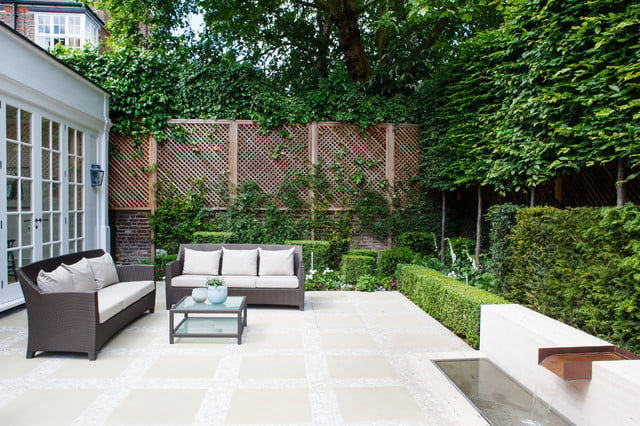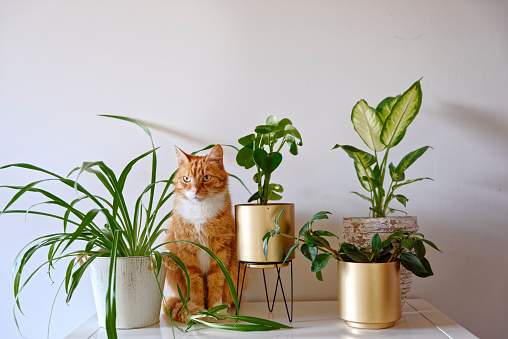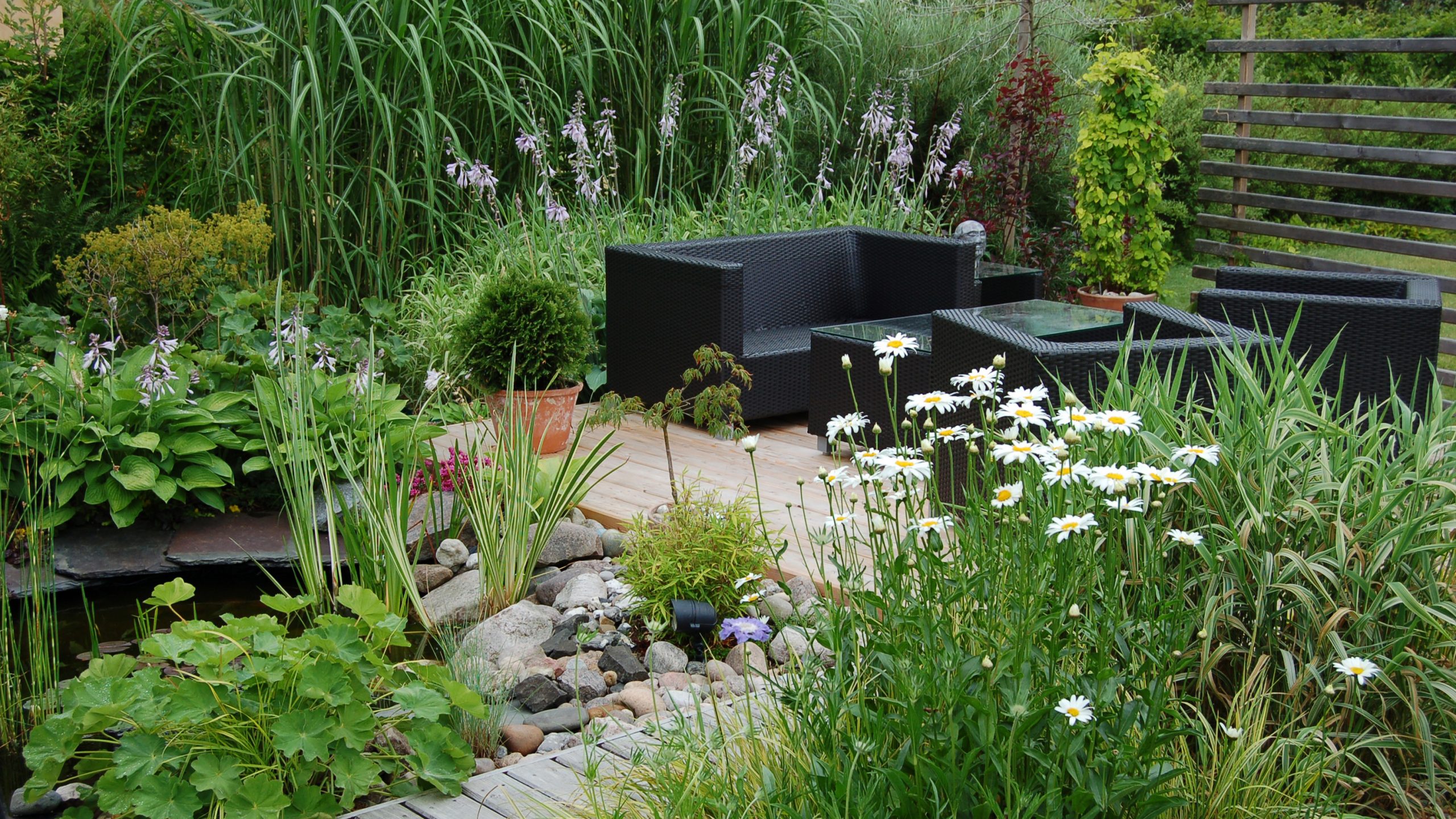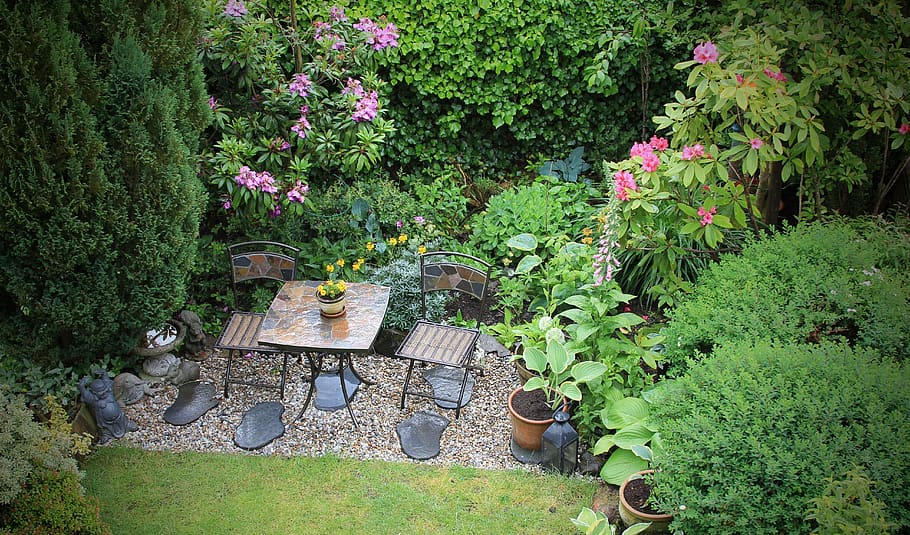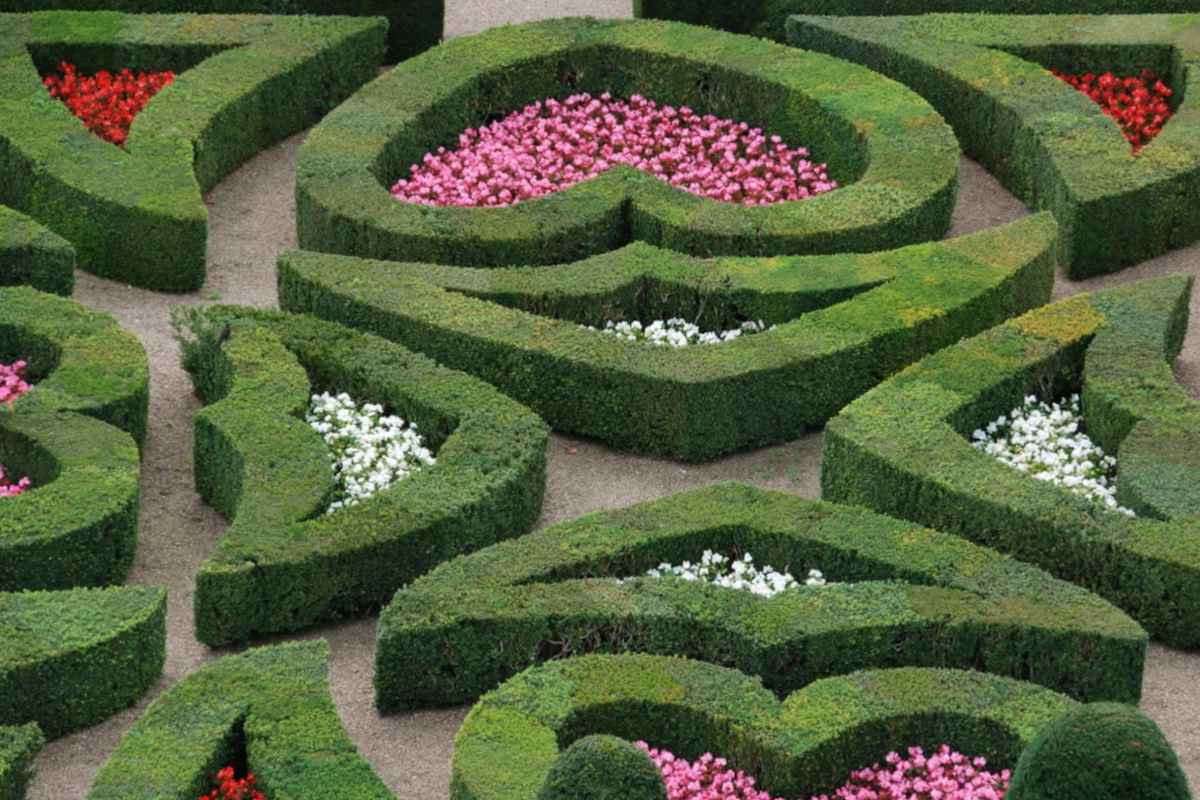Get a Stunning Slope Garden with These 14 Essential Planting Tips
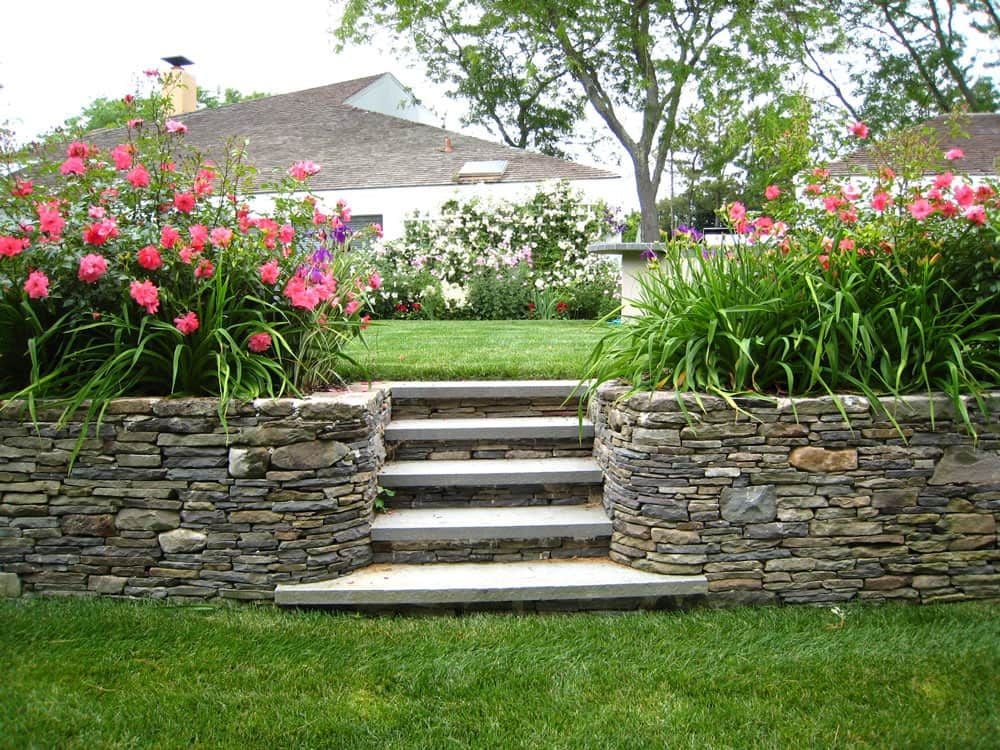
Table of Contents
Working with a garden on a slope can be both intimidating and exciting at the same time. They are tricky to walk and work on, but not everything is bad about them. The sloping gardens have their own advantages too. They have some built-in advantages, like you get an instant view, and it’s easier to plant on a hillside. However, on the flip side, there are some questions that come to mind when gardening on the slope.
A few questions that are often asked are, what will happen if it starts raining heavily? How does one deal with soil erosion? What are the easiest things to do when working on a site like that? Thankfully enough, we have all the answers for you.
Here are 14 Tips For Planting & Gardening On A Slope that will make your gardening experience more enjoyable. Check them out!
1. Build a Retaining Wall
A Retaining wall is a great idea for any slope garden. It tames most of your problems and gives you plenty of planting opportunities. It is a concrete block that helps you fix your slope problems and make your outdoor space usable.
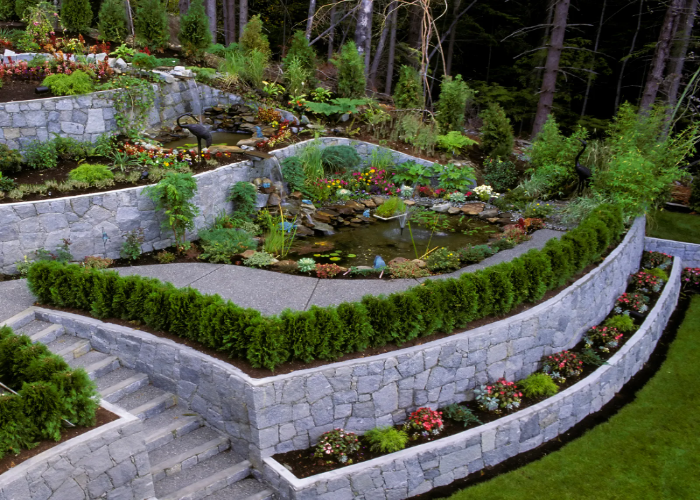
A few things to keep in mind before building a wall is to make sure you plan in advance. Planning is the key here. After you are done planning, the next step is designing the wall.
2. A Terrace is a Good Idea
Terraces are a good way to add character and gardening opportunities to your slope. Before we dig deep into how to use it, let us get to know what it is. They are ridged platforms that will help any gardener in conserving water and stop the land and soil of the garden from eroding or cascading down the slope.
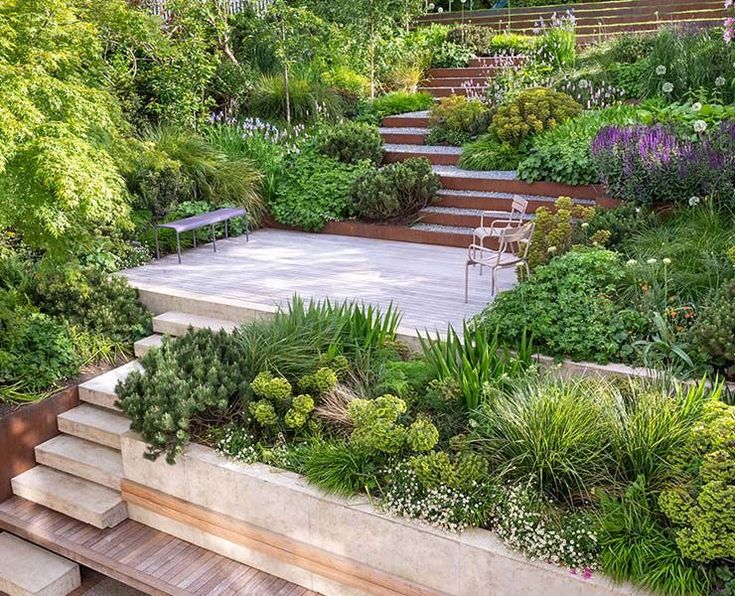
Terracing can be done with a number of materials, including brick, wooden sleeper, concrete block, or even rock-filled gabions.
3. Add Some Steps
If you are serious about adding some terraces on your slope, do not forget about steps or pathways that will give you access to higher levels. They should have the extra grip to make your movement across the slope safe. Nothing will be fun if the stairs are slippery and you can’t move on them.
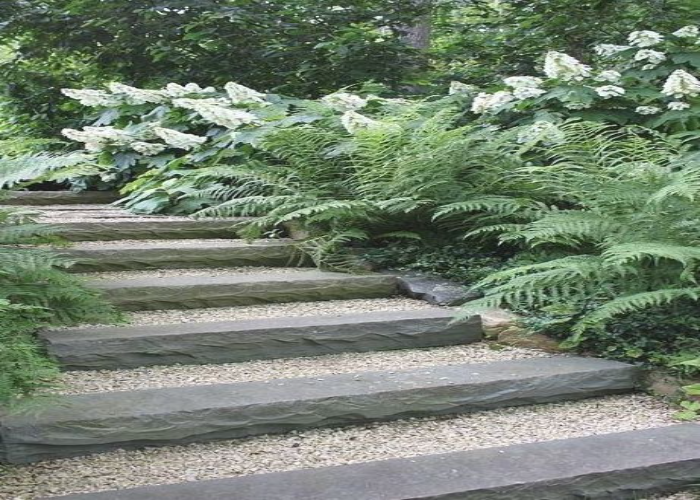
Pro tip: If you are getting terracing done professionally, you can consider a good irrigation system that will make gardening easier.
4. Design a Trail
Not a big fan of stairs? Not a problem. You can also design a trail through your garden. This will not only give you a direction to walk in but also make it easier to walk in your backyard. A trail is a great addition to a space where you have planned shrubs and little plants that cover the whole ground. On a practical note, this is a great way to add water to your garden.
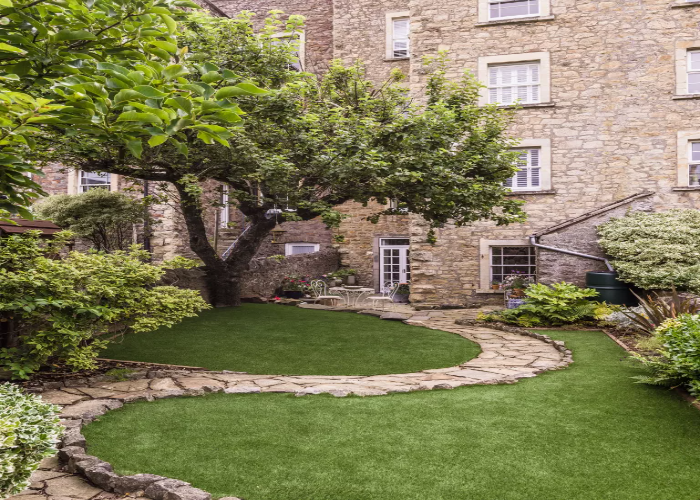
As a design tip, add alternate ends to each terrace and create defined pathways that will give it a very artistic look. To elevate the whole look, you can edge the borders of these trail rocks with metal, plastic, or a line of gravel that will outline the space and give a beautiful contrast.
4. Make Full Use of Drainage
It is possible that your slope might not need terracing, but it is still important to think carefully and plan for what your backyard actually needs. This is when draining and planting would come in. Generally, in a sloping garden, the top areas a drier than the bottom ones. Water gets collected behind the retainer walls, which leads to pressure issues.
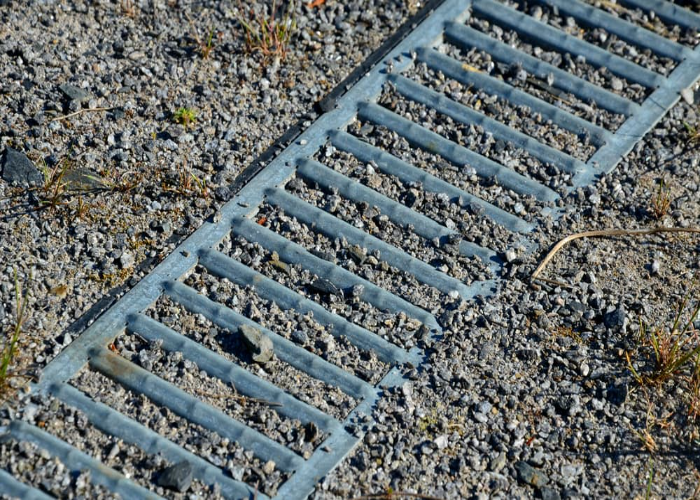
However, you can solve all of these issues with some drainage solutions. Incorporating gravel draining behind the restraining wall will do wonders. The weep holes will allow the water to drain quickly, lifting the pressure off the wall.
5. Plants Can Come in Handy Too
A very easy way to deal with soil erosion is to cover the ground with deeper-rooted, mat-forming plants that will stop rainfall from washing away all your soil. These mat-forming plants will bind the soil together, reducing erosion all at once.
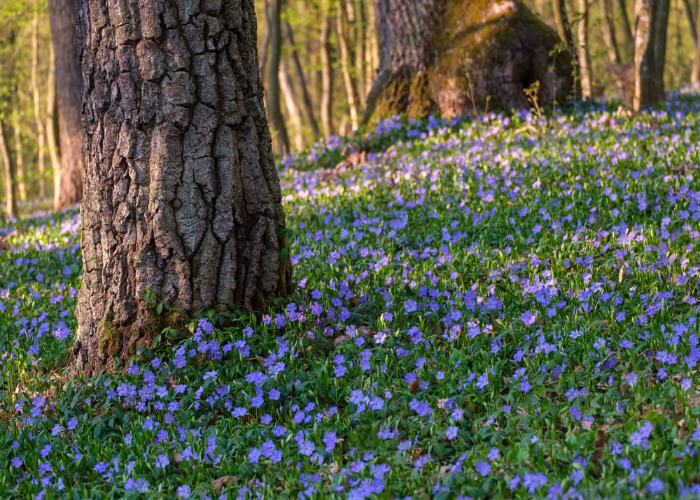
To take things up a notch, you can create mini terrace gardens around each plant and push some bricks down the soil around the plant. This will allow the water to settle around these plants and not take away all the nutrients and the soil. Pro tip: Try to use larger mulch because they won’t get washed away easily, but finer ones will.
6. Make an Experimental Garden
It is sometimes okay to let your slope garden take shape on its own. You can use the scree slopes to make scree gardens that will look attractive and very natural on their own. Scree is the accumulation of small stones that generally need great drainage.
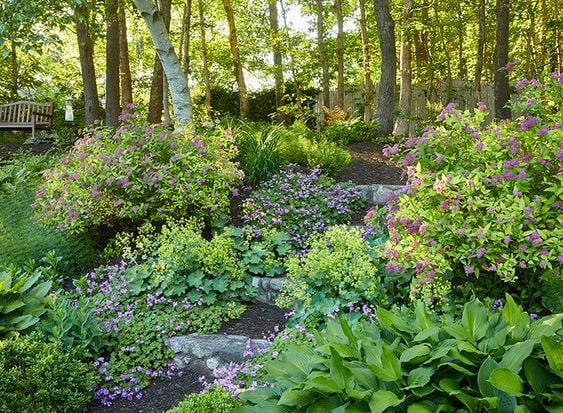
The Scree gardens are made on the base level and provide creative opportunities for different kinds of planting
7. Build a Brook
One of the good things about having a slope in your backyard is that you get to have your own burling stream. Water cascades down the slope anyway, and while you might feel it’s unmanageable, the good thing is it is very much manageable and can look beautiful.
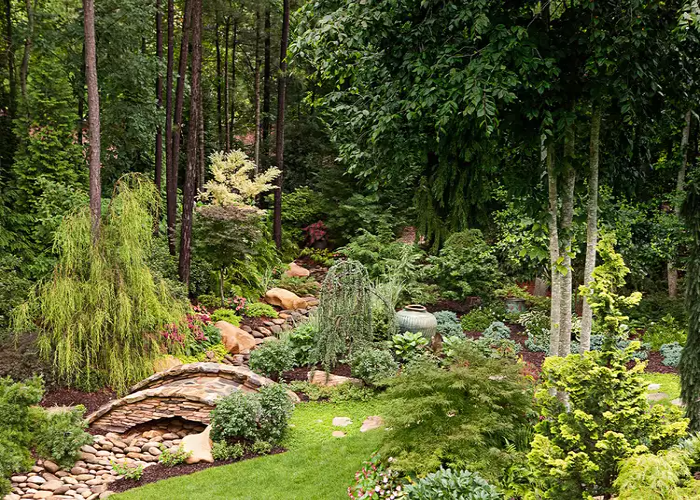
Not only this, if you make a brook out of the already cascading water, it will help control soil erosion and manage the moisture level. However, if you aren’t a big fan of water flowing down your slope, you can also make a dry creek, and it will be just as beautiful.
8. Use Boulders to Give a Natural Look
Terracing is generally the logical solution for all grading issues. However, you can make the whole place look better with rounded boulders. They will gently build up to the grade from the lower lawn to the top. The rockery will preserve the natural look of the backyard but also keep the soil from getting washed away.
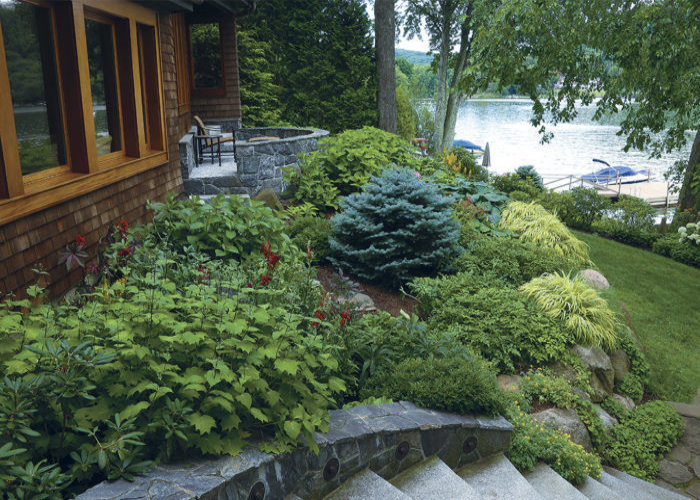
You can add simple rocks as a pathway in the middle that will help you move around for any maintenance.
9. Create a Verticle Garden
Give your towering terraces a hint of cottage charm by planting plenty of spring bloomers. Use the plants that go all around long and make a trail of plants spilling over the edges of your terrace gardens; bring in a number of colours that will give your backyard an attractive look and breathe a lot of playfulness and a naturalistic look into it too.
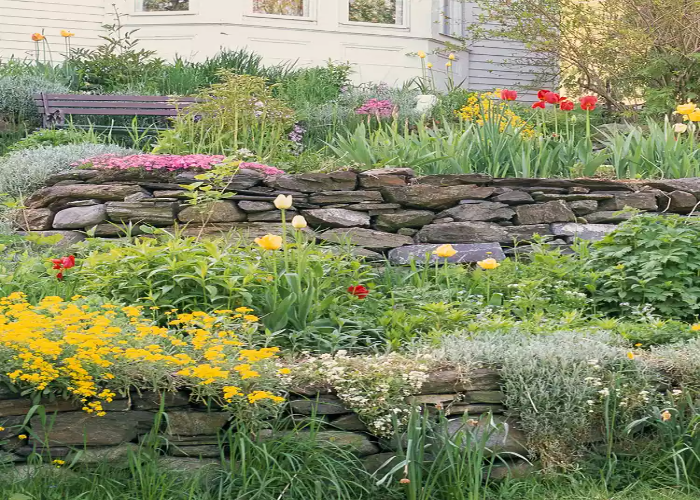
A few plants that really stabilize the slopes in gardens are Siberian Cypress, Groundcover roses, Deutzia, Creeping Juniper, and Fountain Grass, among many others.
10. Show Off Your Favourite Containers
Just because you are gardening on a slope doesn’t mean you cannot show your personality through it. One of the best ways to do it is by using and showing off your favourite containers. Paint your pots, and use DIY or best out of waste to make your garden look more attractive. Use them to pot your favourite flowers.
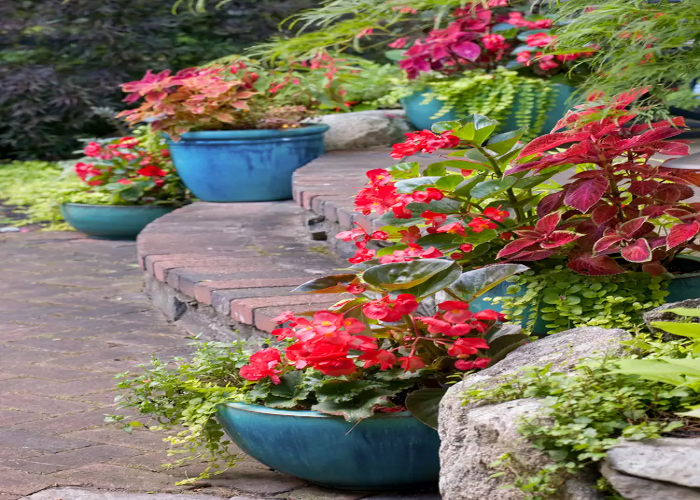
11. Make a Beautiful Deck
If you are using terracing on your sloping garden, make full use of it. One way to use it is to make a beautiful deck out of it. You can make a great multilevel deck on a space that was previously a sloped flower bed. This place can have a rustic look and will give a great look, giving a contrast of natural wood and plantings. This will be a place you have to enjoy some warm coffee while breathing in the fresh air.
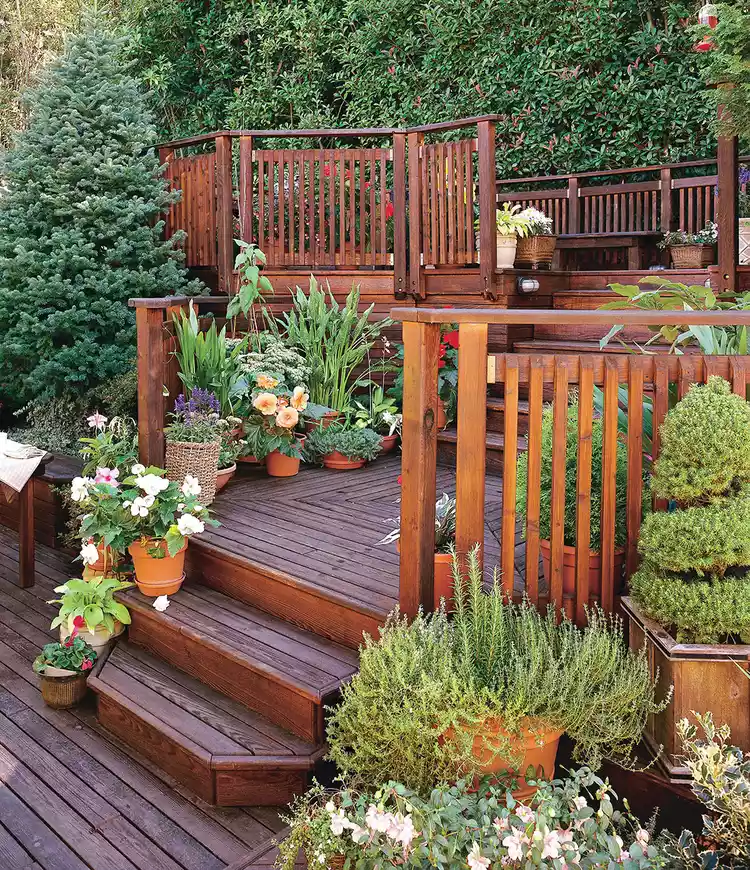
Place them in places like entries, the places where most people will get to look at them. So, make sure you make full use of it.
12. Make an Outdoor Living Room
With all the little shrubs holding up the soil and big boulders working their magic, you can make a sitting space on the slope. Add a bench and make a little retreat for two.
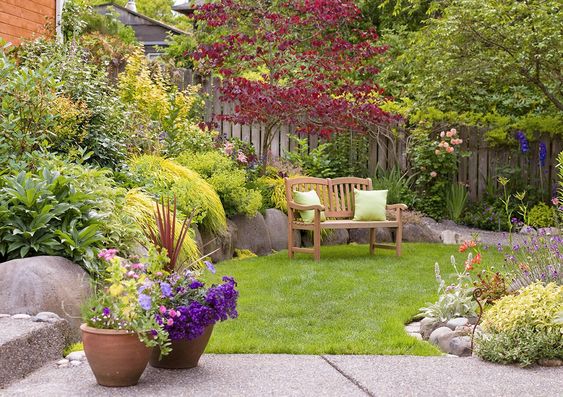
The colourful perennials and the shrubs will give you a peaceful ambience, and spending time in your own backyard garden would be a great way to spend an evening.
13. Experiment a Little
Don’t be afraid to experiment a little and mix up the planting. You can use vertical spires and mounds to make give your backyard a more dynamic look. Don’t forget that Slope gardens offer you a lot of scope on what you can or cannot plant. Just remember that whatever you plant has deep roots and can hold more soil.
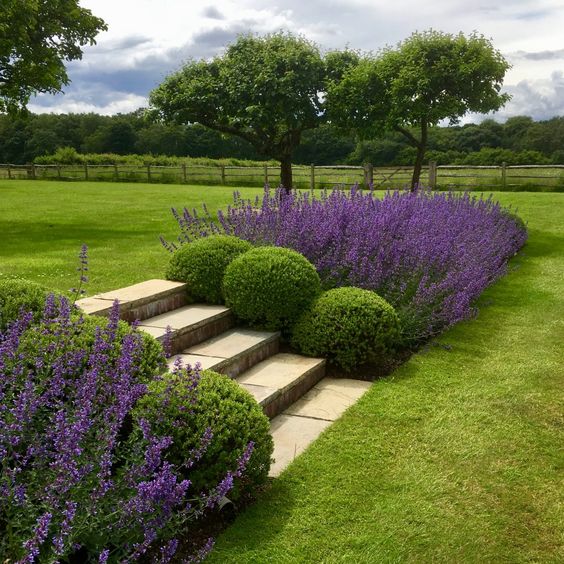
If you do not want to plant shrubs and perennials, you can experiment and try planting some bigger plants. Their deep roots will hold the soil, giving you better soil retention.
14. Work on It Cautiously
Making a garden on a slope is possible, but it is not risk-free. So, make sure you tread on it very carefully. Do not work on it when it’s raining or slippery. When mowing on this lawn, make do not do it very often. Let your plants and flowers grow, and make your slope look incredible.
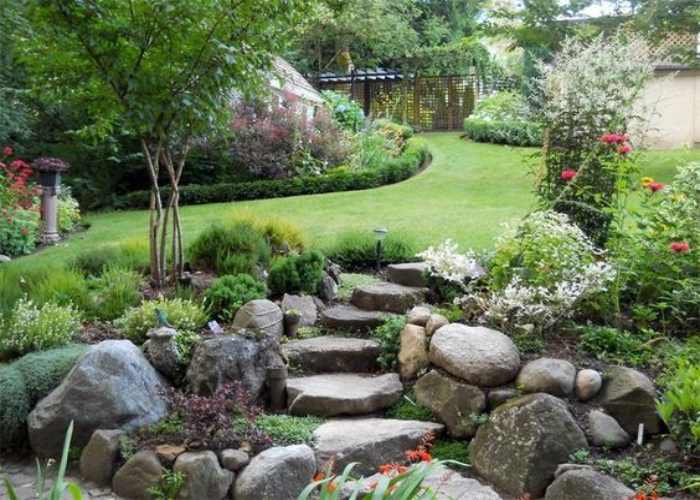
Since it is on a slope, it is easier to lose balance. Be very careful about working in a garden like this.
Don’t Miss Out On This!
While these tips and tricks will help you big time, gardening on a sloped site can be a little tricky. It proves to be quite a challenge to many people. However, the good news is, it isn’t impossible. In fact, you can do it with a little bit of effort and consciousness. There are a number of things that a sloping terrain demands when making a garden out of it. Here are a few things that make up the basics that you should think of.
- The first thing to do before you start landscaping your sloping garden is to get to know your site. You must get to know your land, its gradient, and its draining before making any big decision. You will have to make sure if your slope is too steep and can be eroded and how you can work with this. A slope with 2:1 drops of one meter (foot/unit) is very steep for plants to grow. So, make sure your slope is 3:1 to maximize the usage of your garden.
- You must consider what is already there on your site and what you need to take away or add. If your site already has big mature trees, removing them might have a big impact on the soil and might not be the best idea. So, you can resort to preserving them and making a garden by including them in your landscaping plan.
- Another thing to take into account is the grading of your slope. You must make sure that your slope can bear your plans without getting eroded by the massive pressure. Consider planting trees that can form a network of roots that binds the slope and saves it from cascading down in case of heavy rainfalls.
- Irrigation Systems are also an important part of landscaping your sloping garden. Depending on your location and the climate you live in, it is important you include some draining system in your plan. Be it planning a system that drips slow water to your plants or creating barriers to save your plants from excessive water, you must include it in your plan.
- Depending on the scale of your project, it is important that you have some sort of window for maintenance. This way, your sloping garden will go on for a longer time without becoming a mess.
Final Words
While working with a garden on a slope is a little tricky, it can be done with some planning, designing, and smart moves. They provide great opportunities for different planting schemes and, finally, a beautiful look to the backyard.
The key to gardening on a slope is to make sure your soil stays intact without eroding or cascading. With all these little tips and tricks for planting & gardening on a slope, your job will definitely become a little easier.

